Posts Tagged: UC IPM
The Katydid Nymph Did
The katydid nymph did. It did appear in May. The UC Statewide Integrated Pest Management Program (UC IPM) tells us that katydid nymphs appear in our gardens in April or May. This little nymph was right on time, barely, as it surfaced in our...
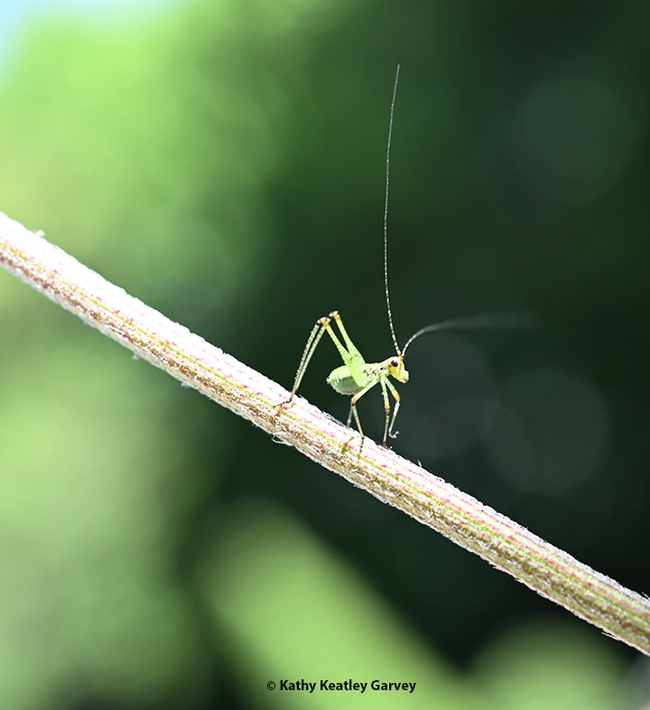
A katydid nymph, its long threadlike antennae upright, descends a stem in a Vacaville garden. (Photo by Kathy Keatley Garvey)
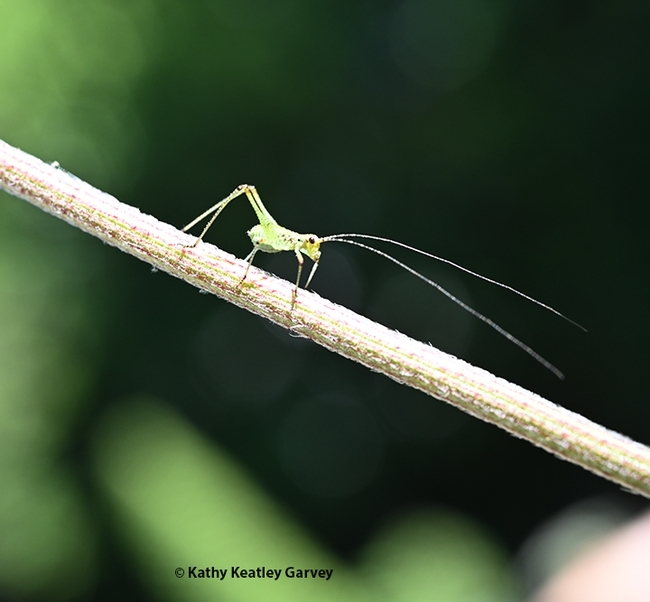
A katydid nymph, its long threadlike antennae upright, descends a stem in a Vacaville garden. (Photo by Kathy Keatley Garvey) The katydid nymph lowers its antennae and proceeds along the stem. (Photo by Kathy Keatley Garvey)
The katydid nymph lowers its antennae and proceeds along the stem. (Photo by Kathy Keatley Garvey)
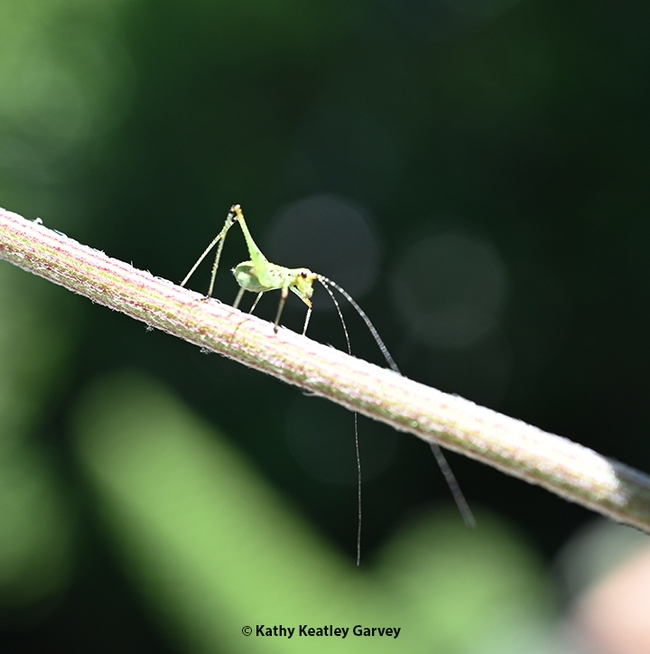
Antennae down, the katydid nymph continues its descent. (Photo by Kathy Keatley Garvey)
The Good Luck at UC Davis Picnic Day
Remember when San Francisco 49'ers wide receiver Brandon Aiyuk credited his spectacular 51-yard catch in the 2024 NFC championship game with the Detroit Lions to a ladybug (note that entomologists correctly call it a "lady beetle") landing on his...
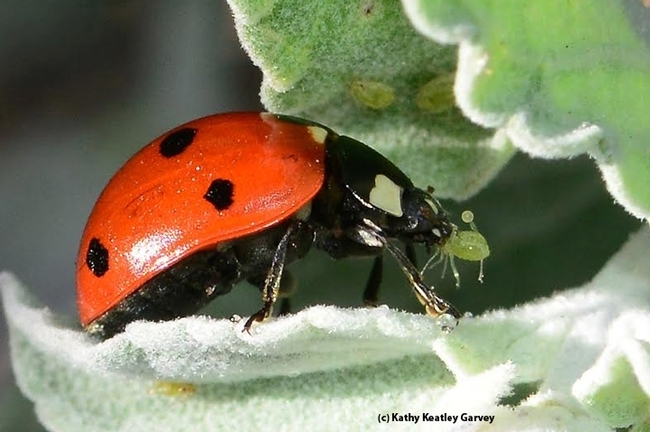
A lady beetle, aka ladybug, devouring on aphid on the UC Davis campus. (Photo by Kathy Keatley Garvey)
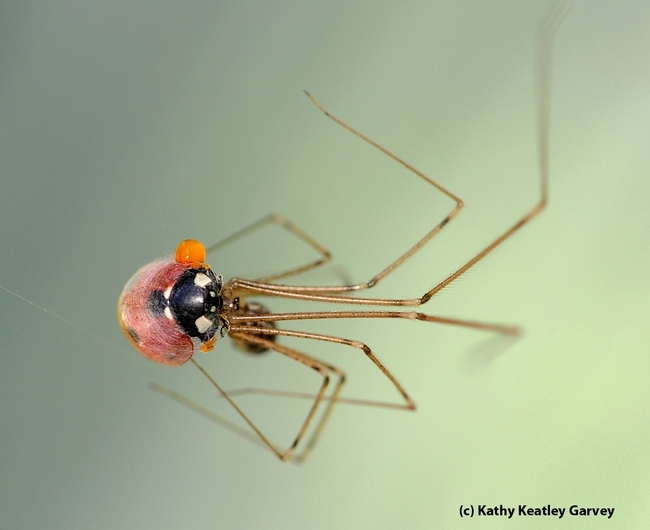
A cellar spider snares a lady beetle in a Vacaville pollinator garden. The red droplet is reflex bleeding, the beetle is emitting an alkaloid toxin to protect it from predators. (Photo by Kathy Keatley Garvey)
A Bigeyed Bug and a Monarch Butterfly
You've heard folks call insects "big 'ol bugs" (often in astonishment or terror), right? But have you ever seen a "bigeyed bug on a monarch butterfly?" Bigeyed bugs, Geocoris spp., are beneficial insects, "found mostly on...
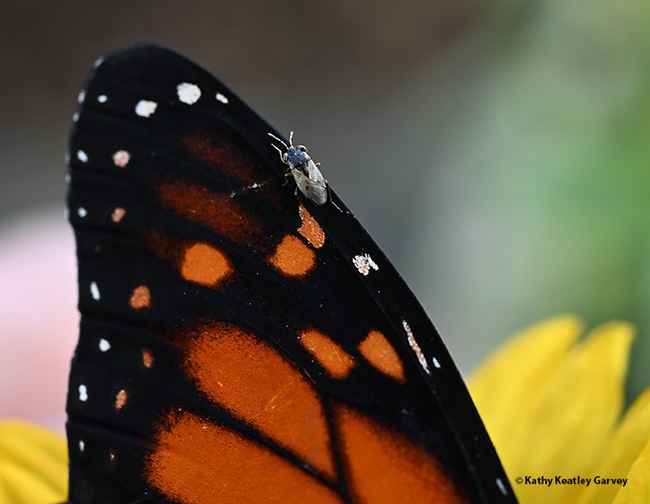
A bigeyed bug on the wing of a monarch butterfly. (Photo by Kathy Keatley Garvey)
Syrphid Flies Are Pollinators, Too
Sometimes overlooked as pollinators are the syrphid flies, also known as "hover flies" or "flower flies." Unfortunately, they are often mistaken for honey bees. Hey, if it's a critter on a flower, it's a bee, right? Not necessarily! Syrphid flies...
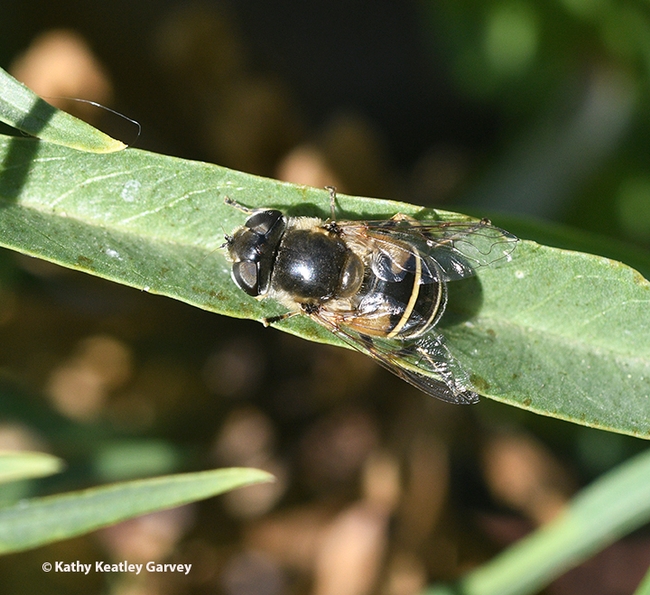
A dorsal view of a syprhid fly sunning itself on a leaf. (Photo by Kathy Keatley Garvey)
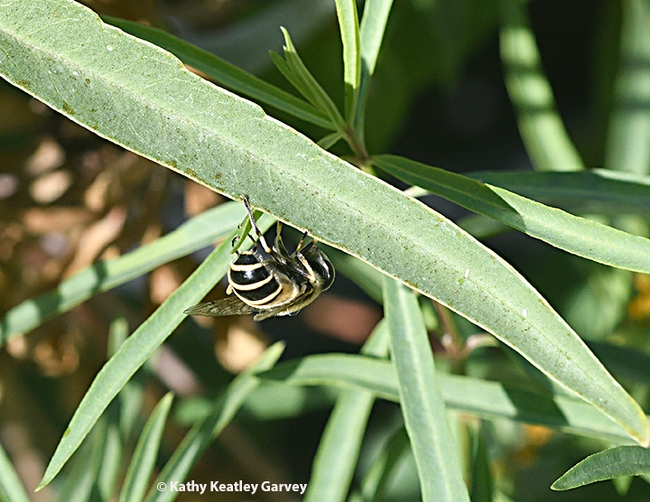
The syprhid fly senses danger and slips under a leaf. (Photo by Kathy Keatley Garvey)
Spiked Forelegs of a Praying Mantis: There Is No Escape
A praying mantis, an incredible ambush predator, can lie in wait for hours for its prey. Often it's so camouflaged that it totally blends in with its habitat. It can rotate its head 180 degrees--and nothing, it seems, can escape its view. Praying...
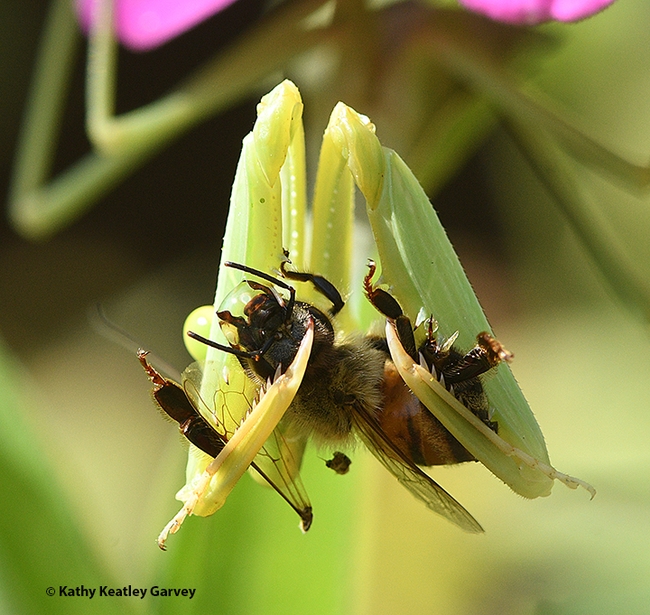
This praying mantis, Stagmomantis limbata, has just ambushed a honey bee and is grasping it in its spiked forelegs. There is no Harry Houdini-kind of escape. (Photo by Kathy Keatley Garvey)
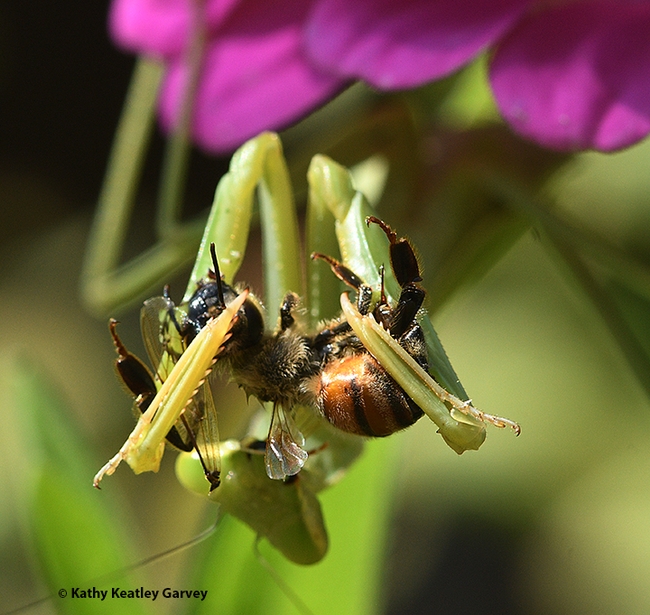
Death grip. With its two spiked forelegs, the praying mantis firmly grasps the honey bee. Photo by Kathy Keatley Garvey)

